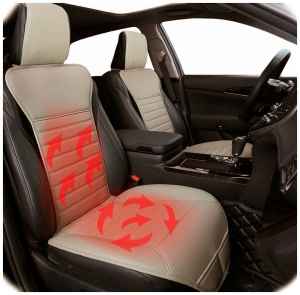Comfort and luxury have always been important factors in the automobile industry, with manufacturers consistently finding ways to enhance these aspects of their vehicles. One advancement that’s been significantly appreciated is the addition of seat warmers. This feature is particularly popular in vehicles like Jeeps, known for their capabilities to navigate through challenging terrains and various weather conditions. Jeep owners often find themselves in cold environments where the seat warmers can greatly enhance their comfort. This wonderful feature turns the interior of a Jeep into a warm and cozy space, regardless of how harsh the weather might be outside. It is not simply a matter of luxury but a functional feature that adds to the comfort, making every drive more enjoyable and less burdensome.
How Do Seat Warmers Work?
The workings of seat warmers are surprisingly straightforward. They primarily depend on the vehicle’s electrical system to generate heat, meaning they don’t use the car’s fuel directly. Inside each seat warmer, you’ll find a series of small heating pads. These pads are comprised of a special material that’s designed to resist electricity. When electrical current from your Jeep’s system passes through this resistive material, it generates heat. This heat then disperses evenly throughout the seat to provide a warm and comfortable seating surface. The mechanism is efficient and quick, ensuring your seat is warmed up by the time you settle in for your drive. As a driver or passenger, all you need to do is press a button, and the seat warmer takes care of the rest, making your journey comfortable and cozy, no matter how cold it is outside.
The Impact of Seat Warmers on Fuel Efficiency

Comfort vs Fuel Economy
In the current era, the quest for comfort and convenience often takes precedence over minor concerns about fuel efficiency. Seat warmers, with their ability to provide instant warmth and comfort, have become an integral part of the modern driving experience, especially in colder regions. Even though there’s a small amount of additional fuel consumption involved, most Jeep owners would agree that the trade-off is worthwhile. The pleasure of stepping into a cozy, warm vehicle on a freezing winter day more than compensates for the marginal fuel cost. After all, the joy of a comfortable drive is one of the reasons people choose Jeeps, and seat warmers certainly contribute significantly to that experience.
Seat Warmers and Gas Consumption
Exploring the relationship between seat warmer usage and gas consumption requires a comprehensive look at how these factors are interconnected. Yes, as we’ve established, the operation of seat warmers does involve some consumption of power from the electrical system, which, in turn, is powered by the engine that uses fuel. However, this chain of usage doesn’t signify a significant drain on fuel reserves. When compared to other high-consumption parts of your Jeep, like the air conditioning system or the engine itself, the power usage by seat warmers is relatively low and the overall impact on your Jeep’s fuel efficiency would be fractional at best. A crucial aspect to remember here is that advancements in vehicle technology are continually improving energy efficiency and reducing fuel consumption, even when utilizing creature comforts like seat warmers.
Final Thoughts
In summary, while the use of seat warmers in Jeeps does have a connection to fuel usage, it’s indirect and insignificantly small and shouldn’t cause much concern for Jeep owners. The benefits offered by these devices in terms of comfort, especially during those cold morning drives, greatly outweigh the almost imperceptible increase in fuel consumption. So, go ahead and enjoy the warmth of your seat warmers without worrying about a drastic dip in your gas mileage. Speaking of maintaining your Jeep, it might be a good time to check if you have the best baby seat for your Jeep if you often travel with your little one.

Add Comment